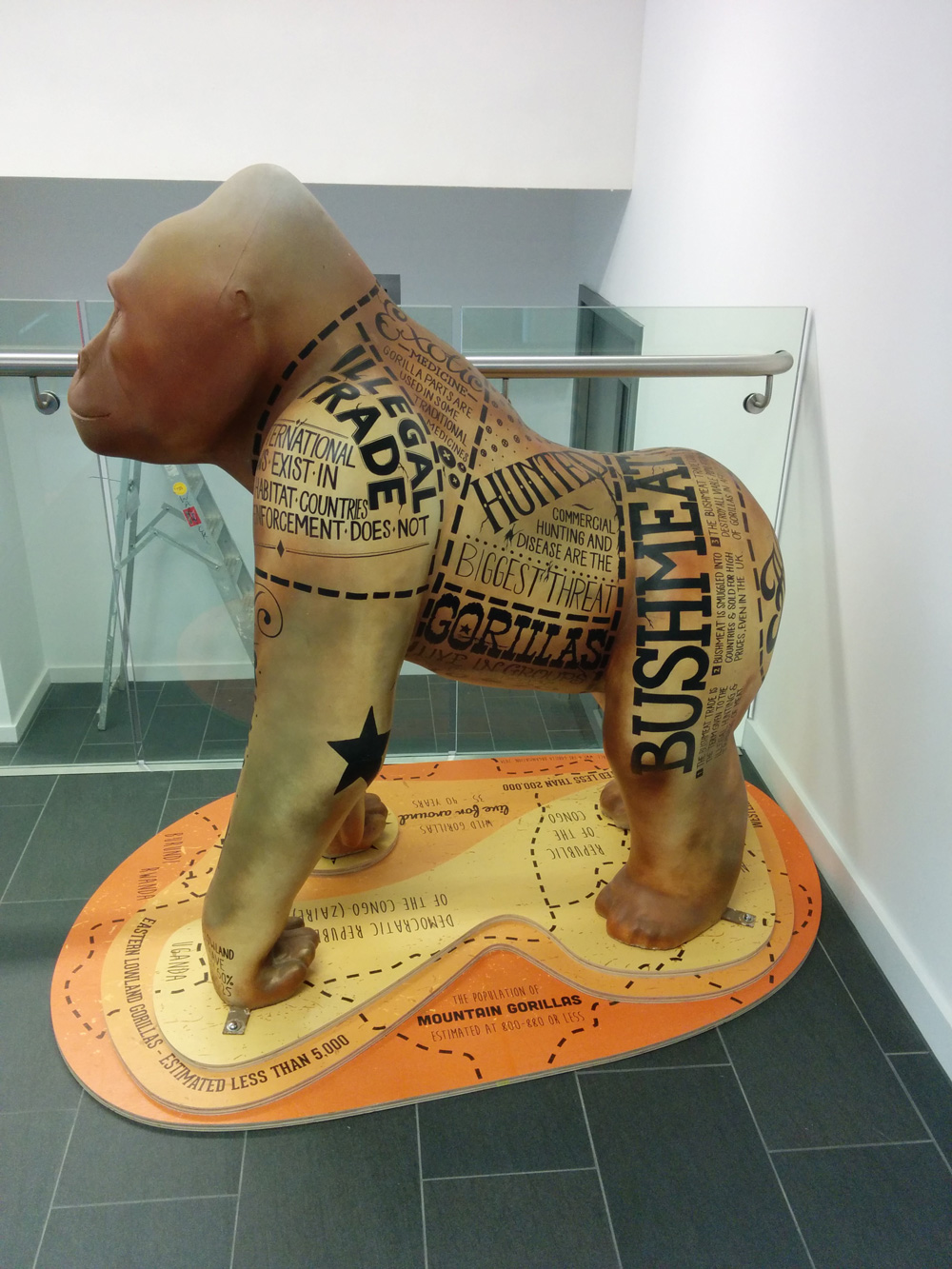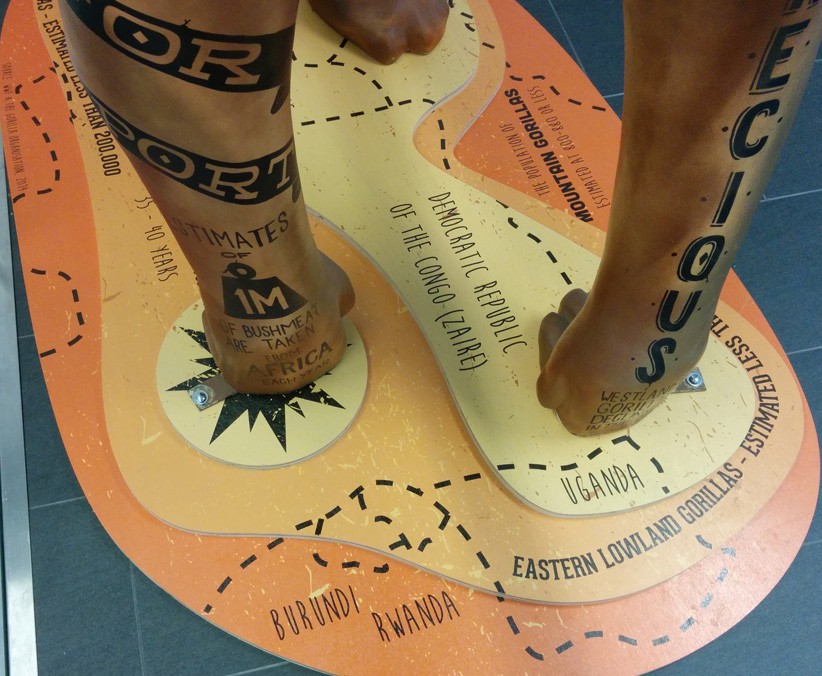Life Sciences building
University of Bristol
We’ve taken inspiration from scientific graphics, delved into the plight of the gorilla and learned a lot about sustainable construction to create materials for the official launch of the University of Bristol’s fantastic new Life Sciences building.
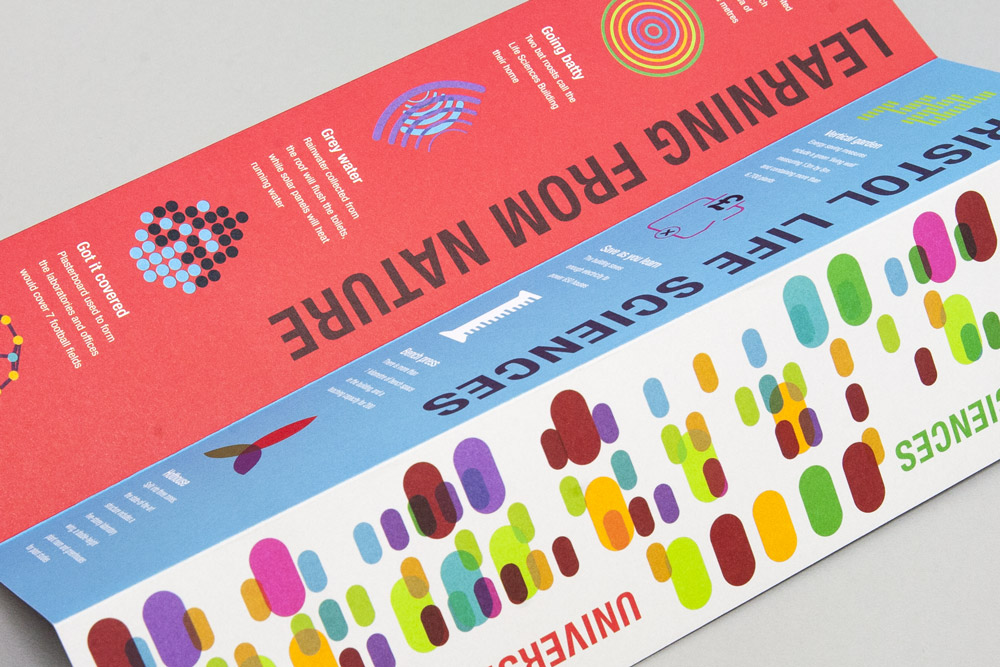
Inspired by the way scientific graphics interpret the world around us we created a set of freestanding display boards highlighting the seven study areas within the School of Life Sciences. We also designed a main display board, which brings the study areas together and shows how they overlap. The recycled cardboard monoliths were printed on both sides and stood in the Life Sciences foyer for the building’s grand opening. As well as listing information about each area of study the boards boast some interesting statistics about the new building, including the fact it has two bat roosts!
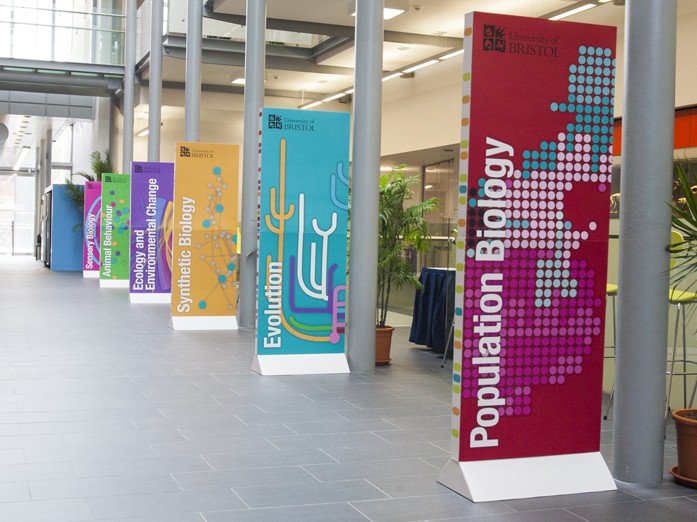
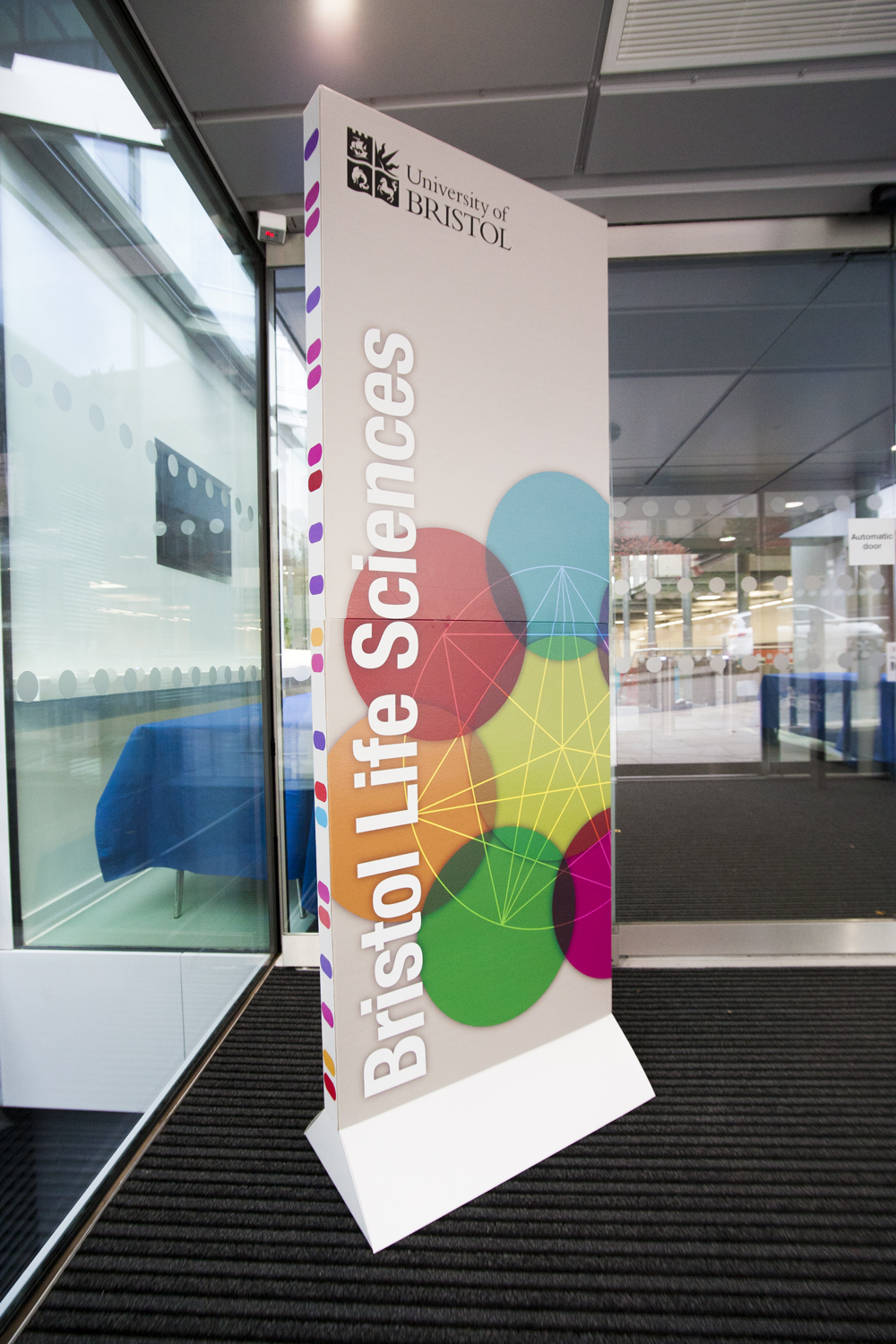
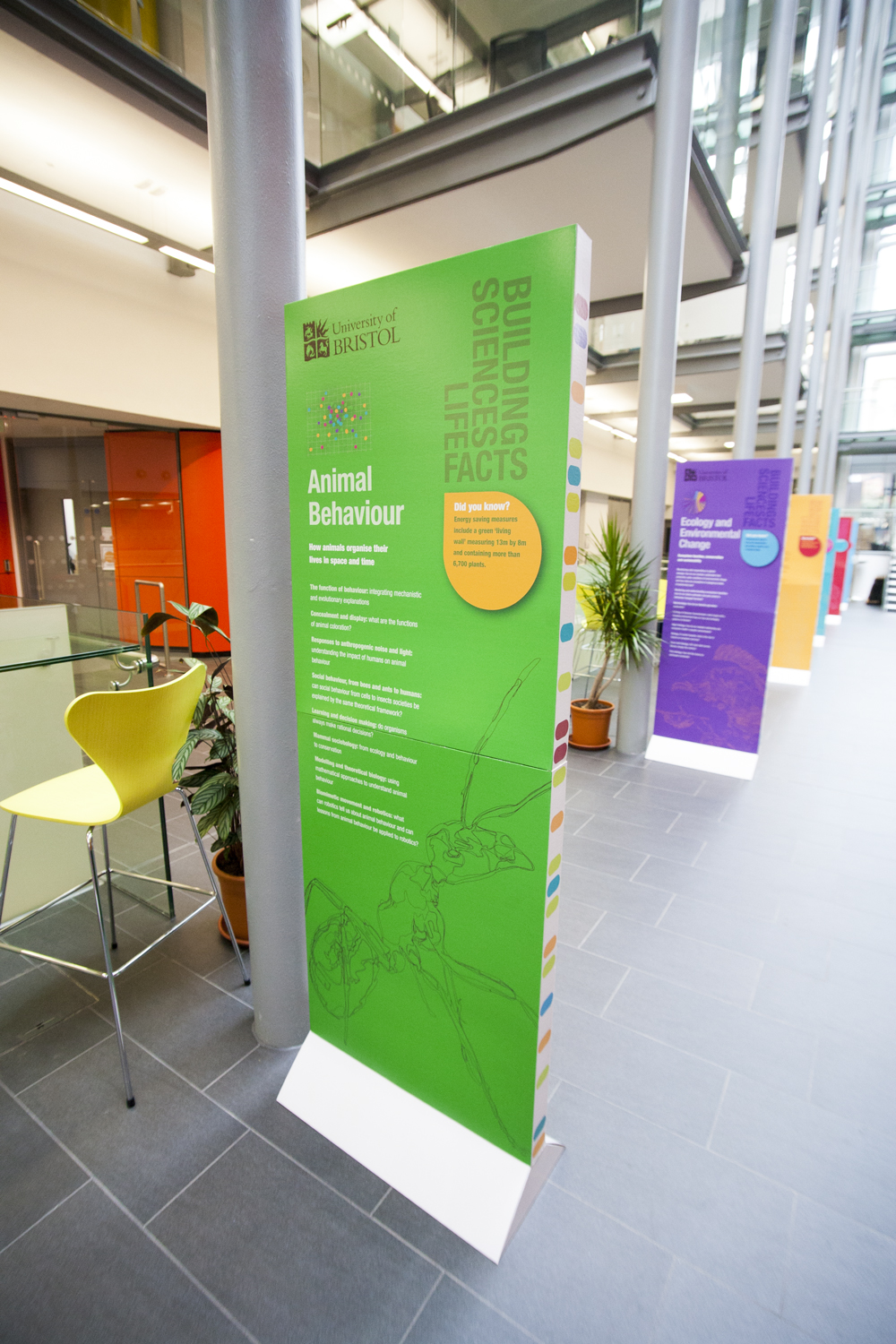
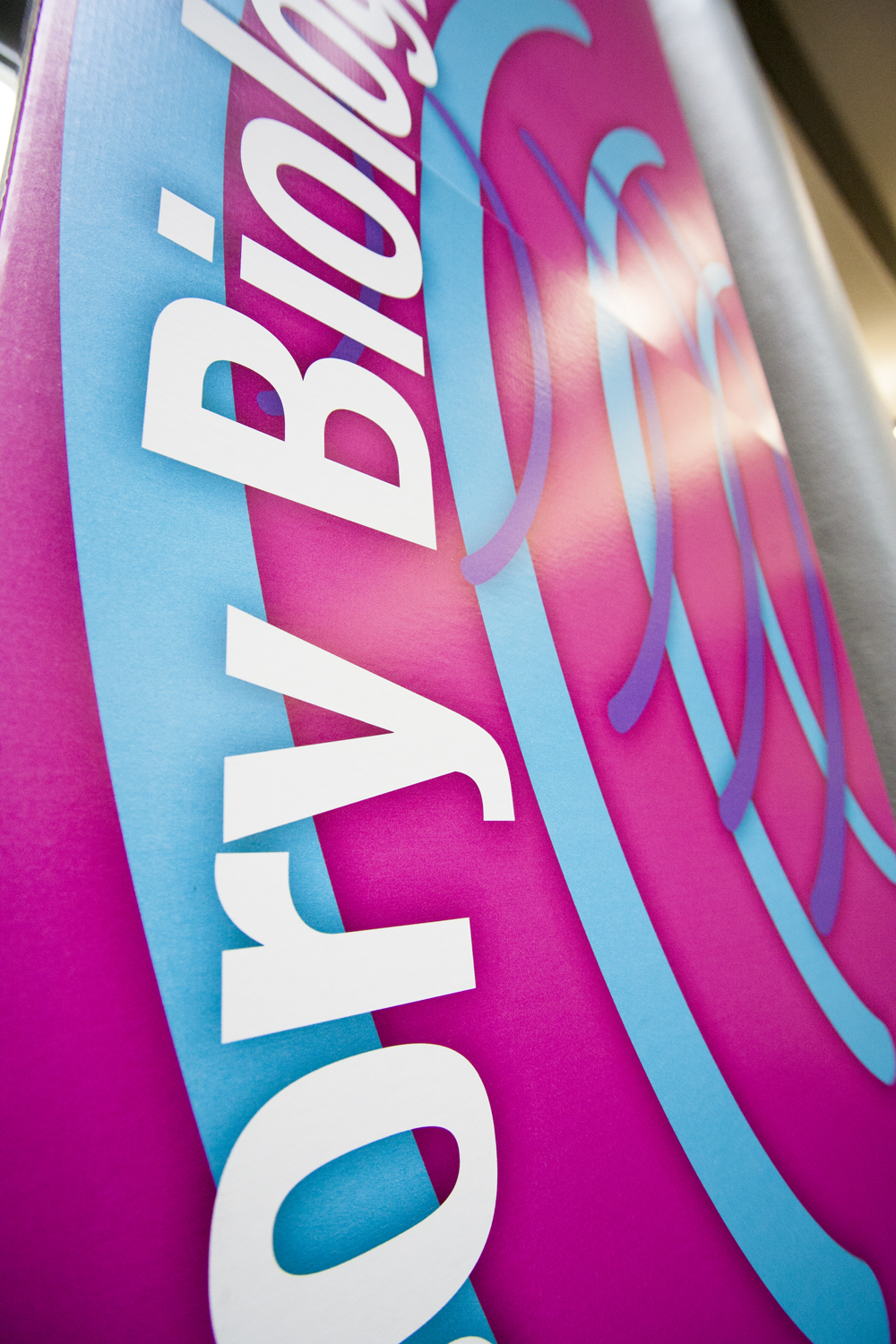
We designed accompanying leaflets with general information about the School of Life Sciences as well as statistics about the sustainable aspects of the building itself; for example rainwater collected from the roof will flush the toilets and the vertical garden contains more than 6,700 plants!
“Thank you for your help with the official opening of the Life Sciences building. I really appreciated all your assistance with the gorilla plinth and the banners – they looked amazing and were all much admired on the day.”
Cheryl Mckeon Slater, University of Bristol
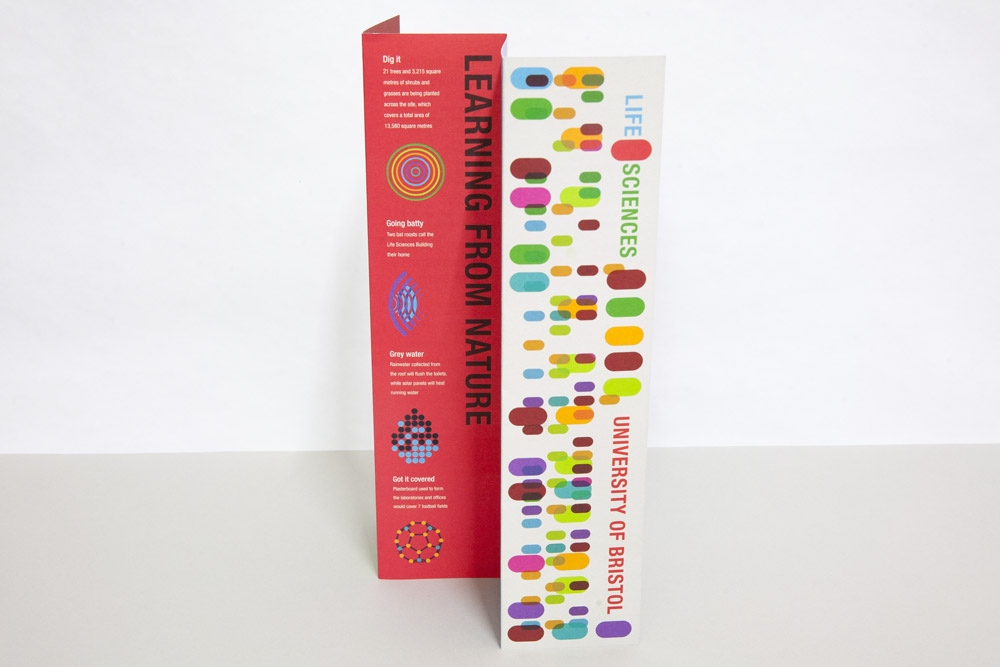

Going Gone Gorilla plinth
We’ve also designed a printed wooden plinth for the “Going Gone Gorilla” statue, which now stands in the Life Sciences building. The gorilla itself, which was part of the Wow! Gorilla event in Bristol in 2011 highlights the threat to the animal’s survival from the illegal bushmeat trade. The plinth was made out of three layers of marine ply; our design with geographical references and statistics on the different gorilla species under threat was printed directly to the surface of the ply, which was then bonded together to create a platform for the gorilla to stand on.
“Looks brilliant! Thanks for your patience as well as your creative insights on this project.”
Aliya Mughal, University of Bristol.
